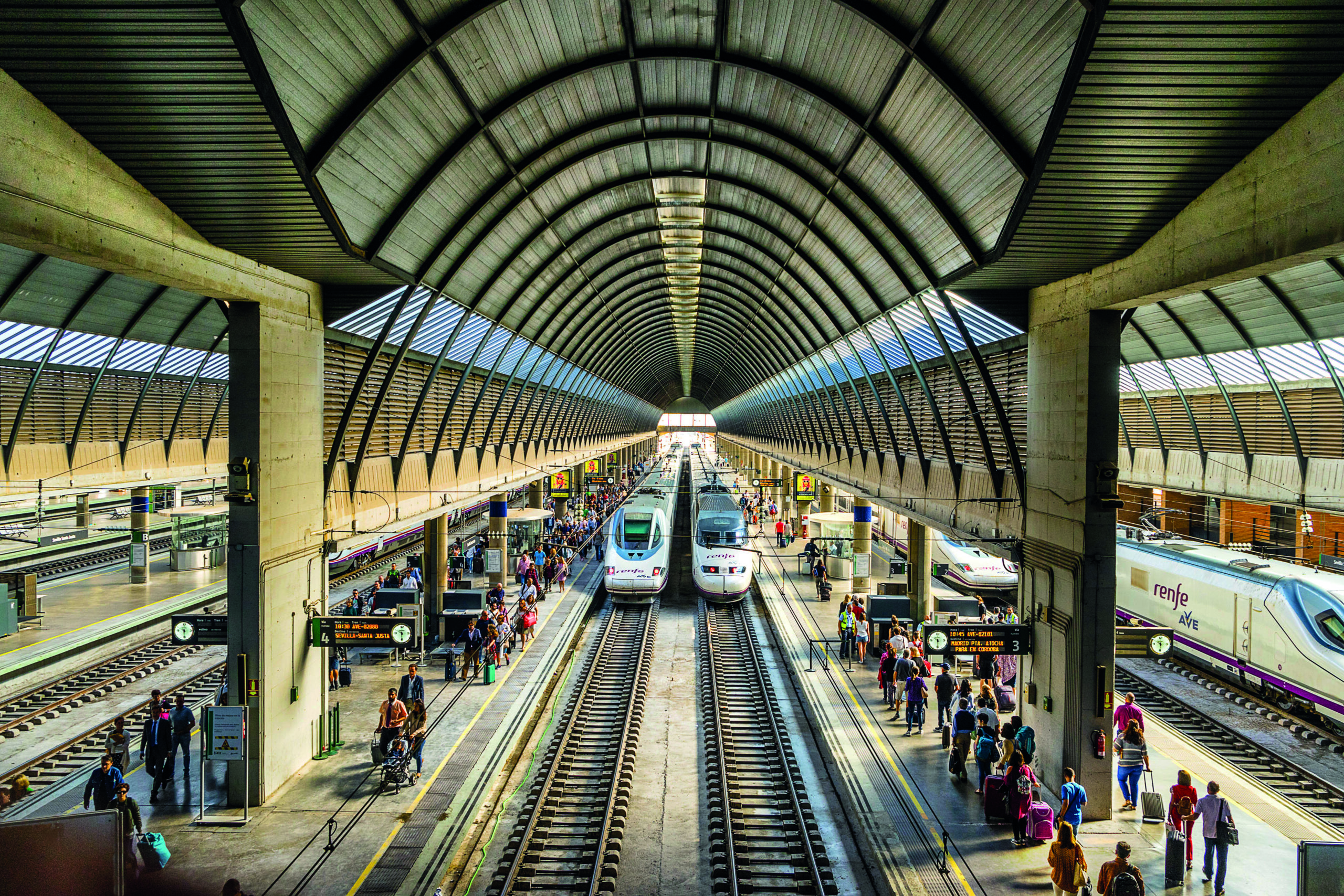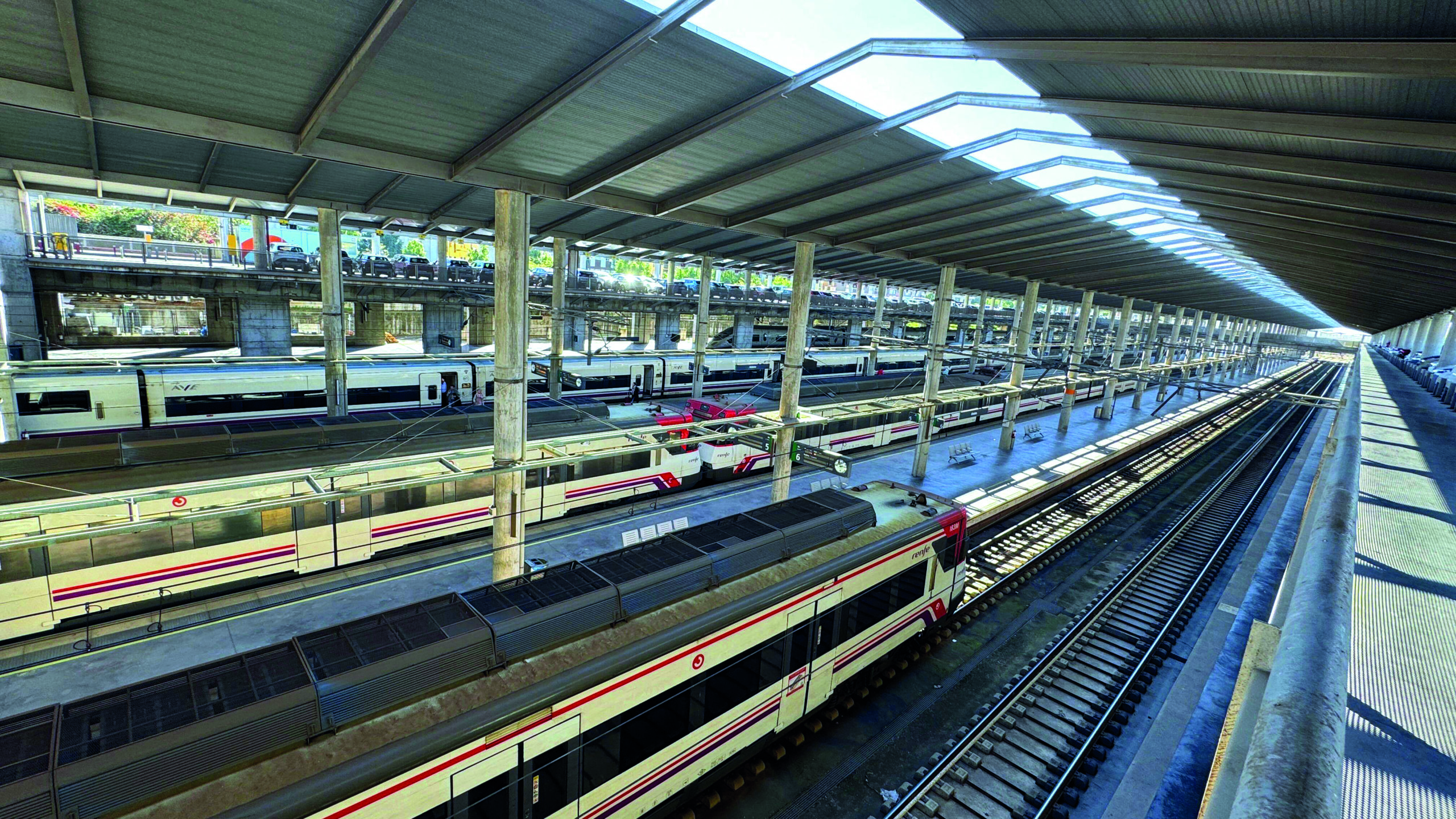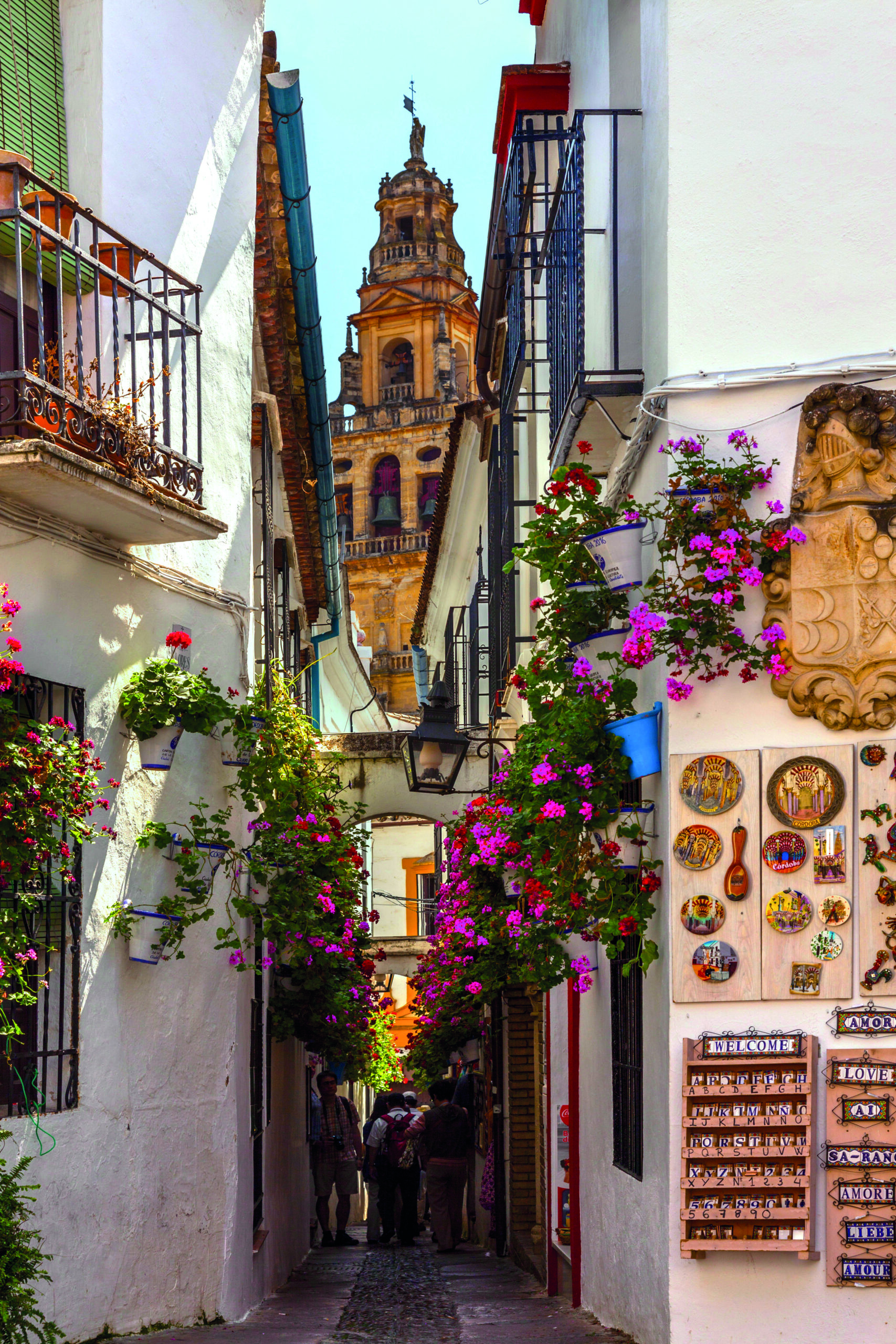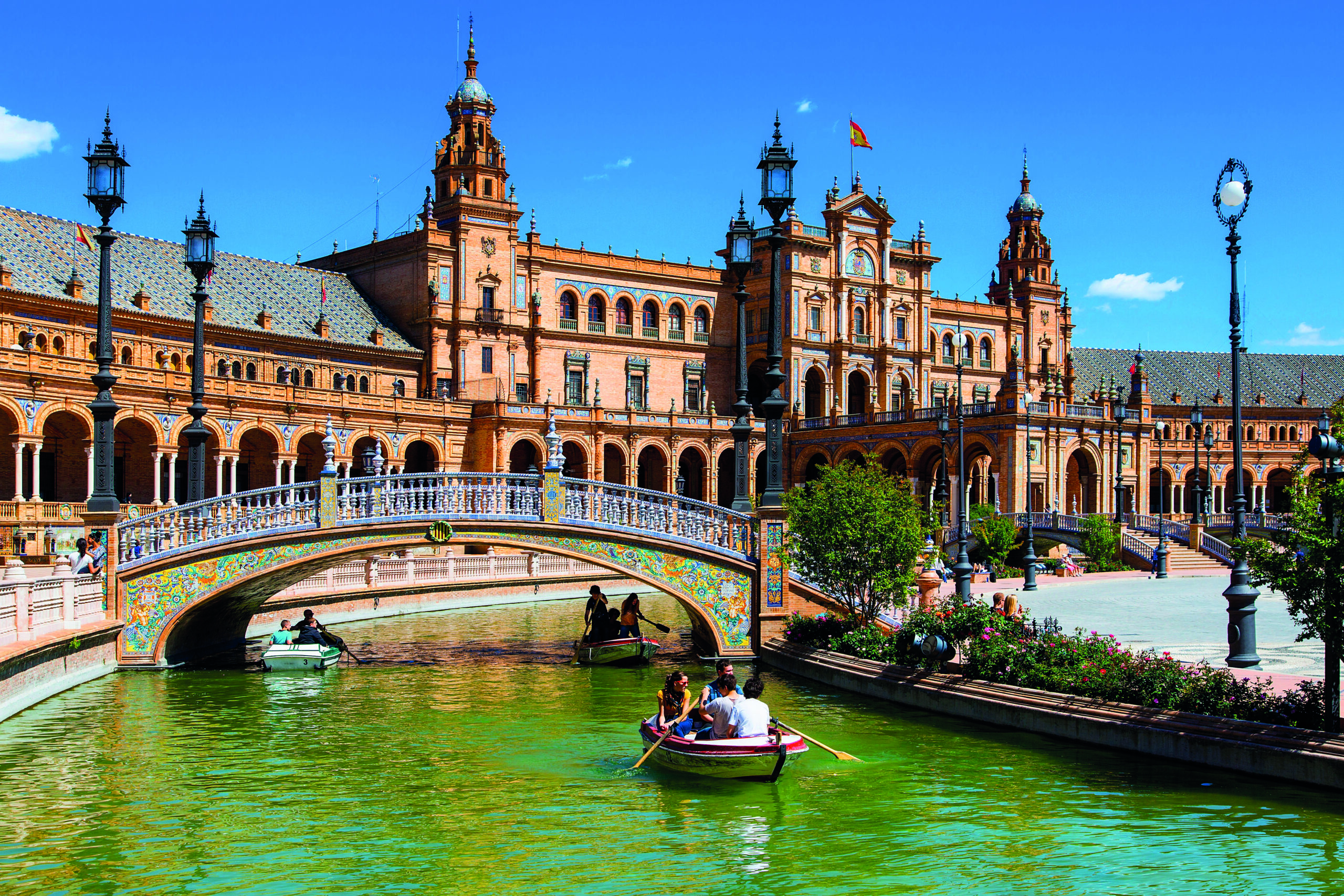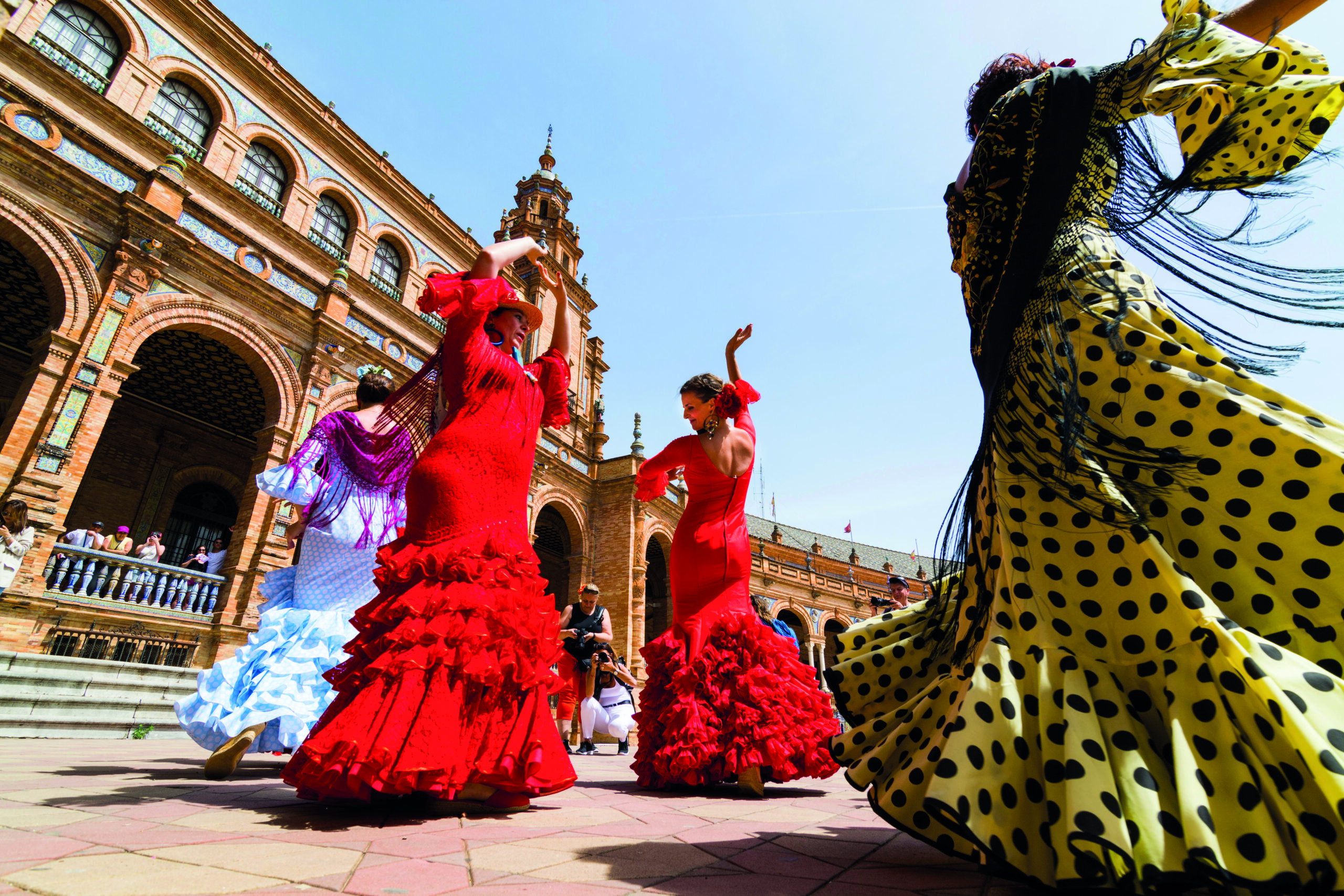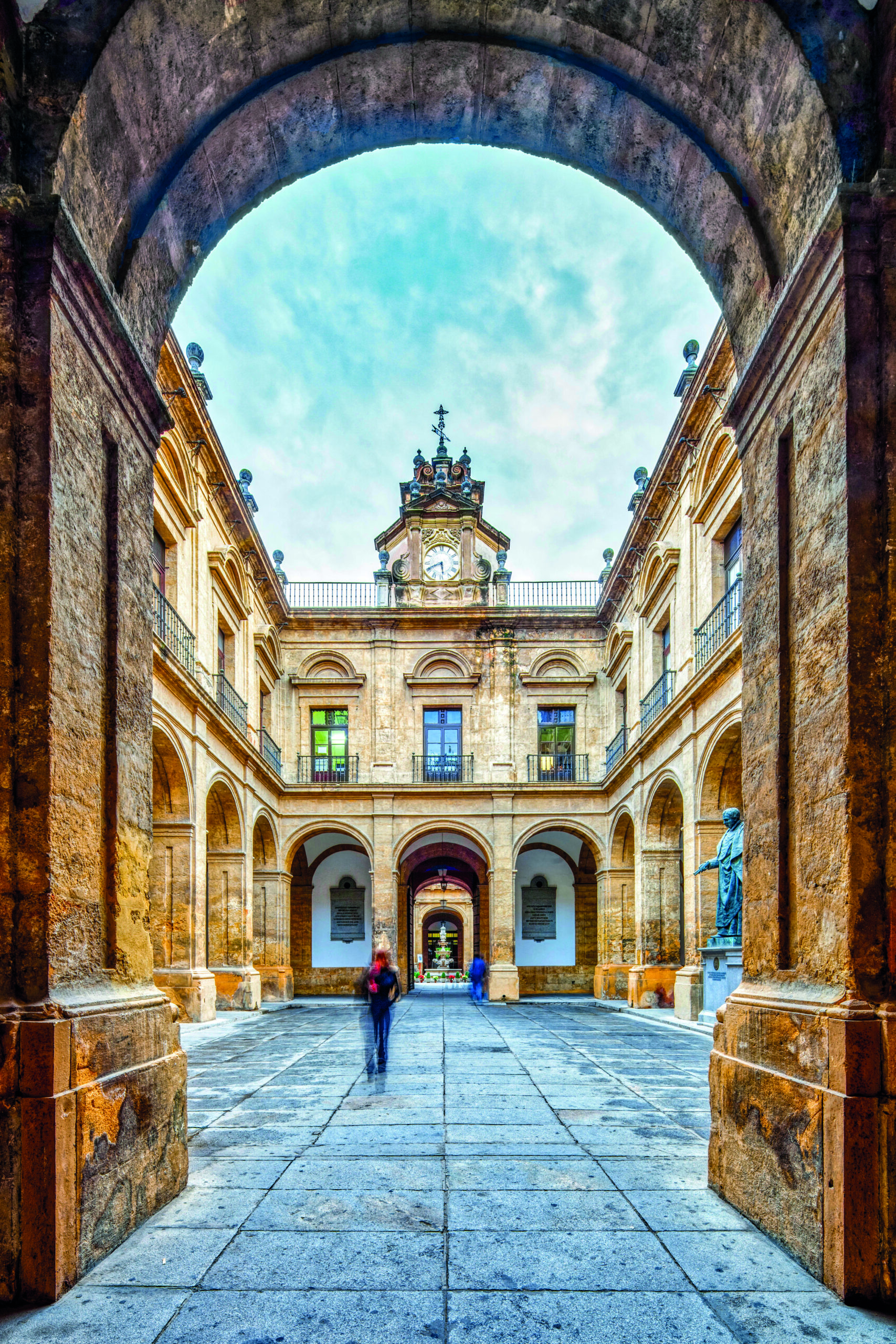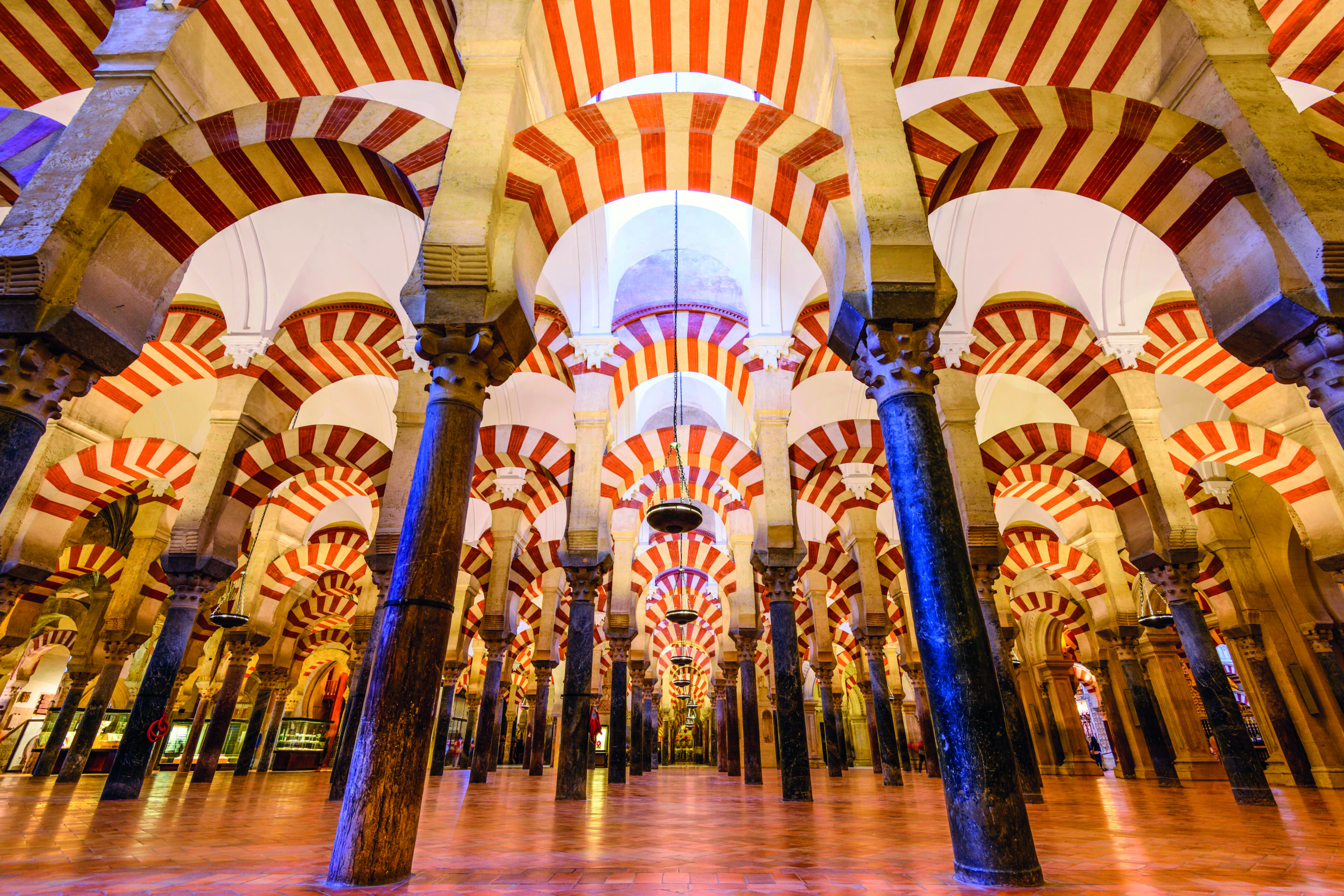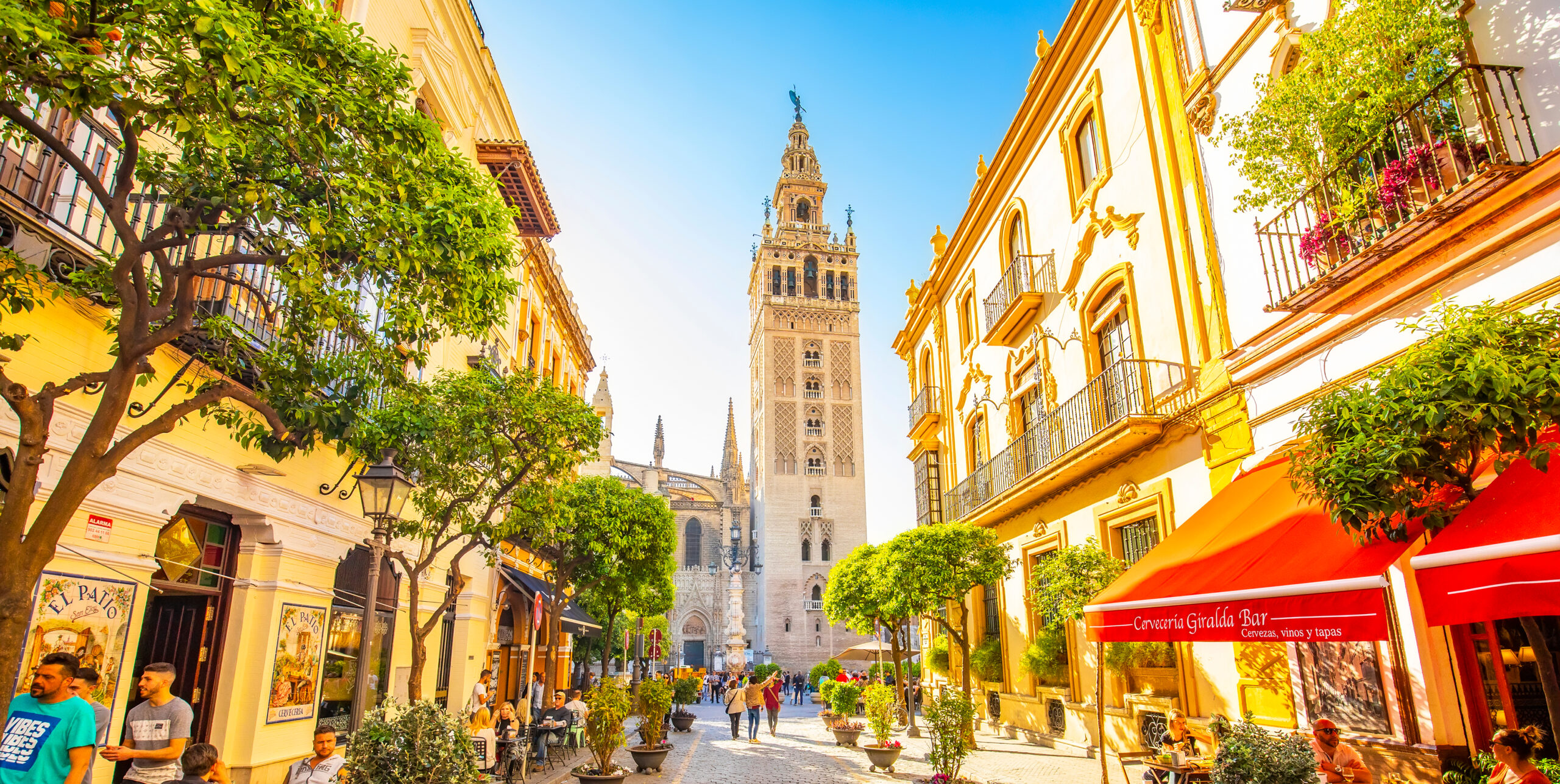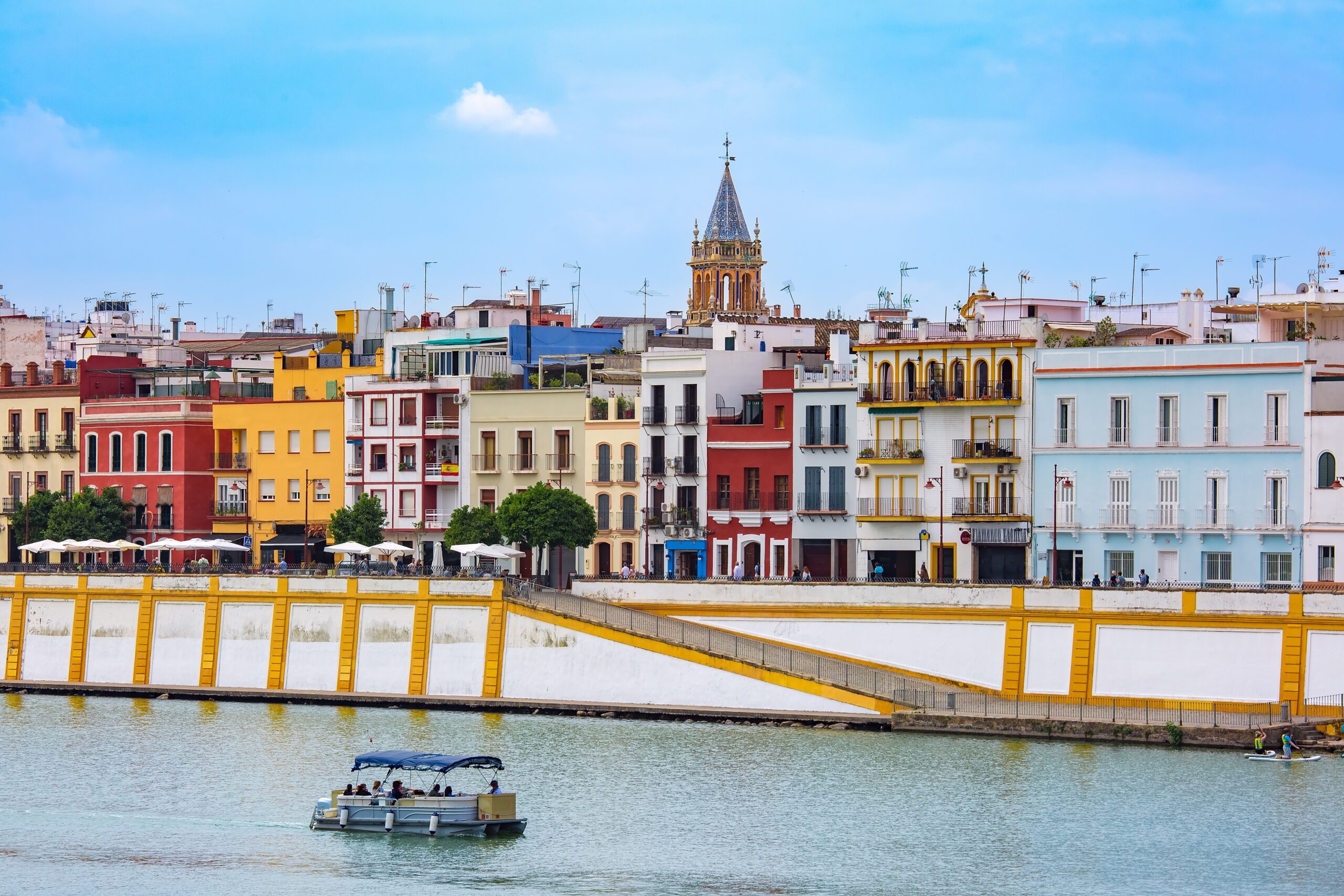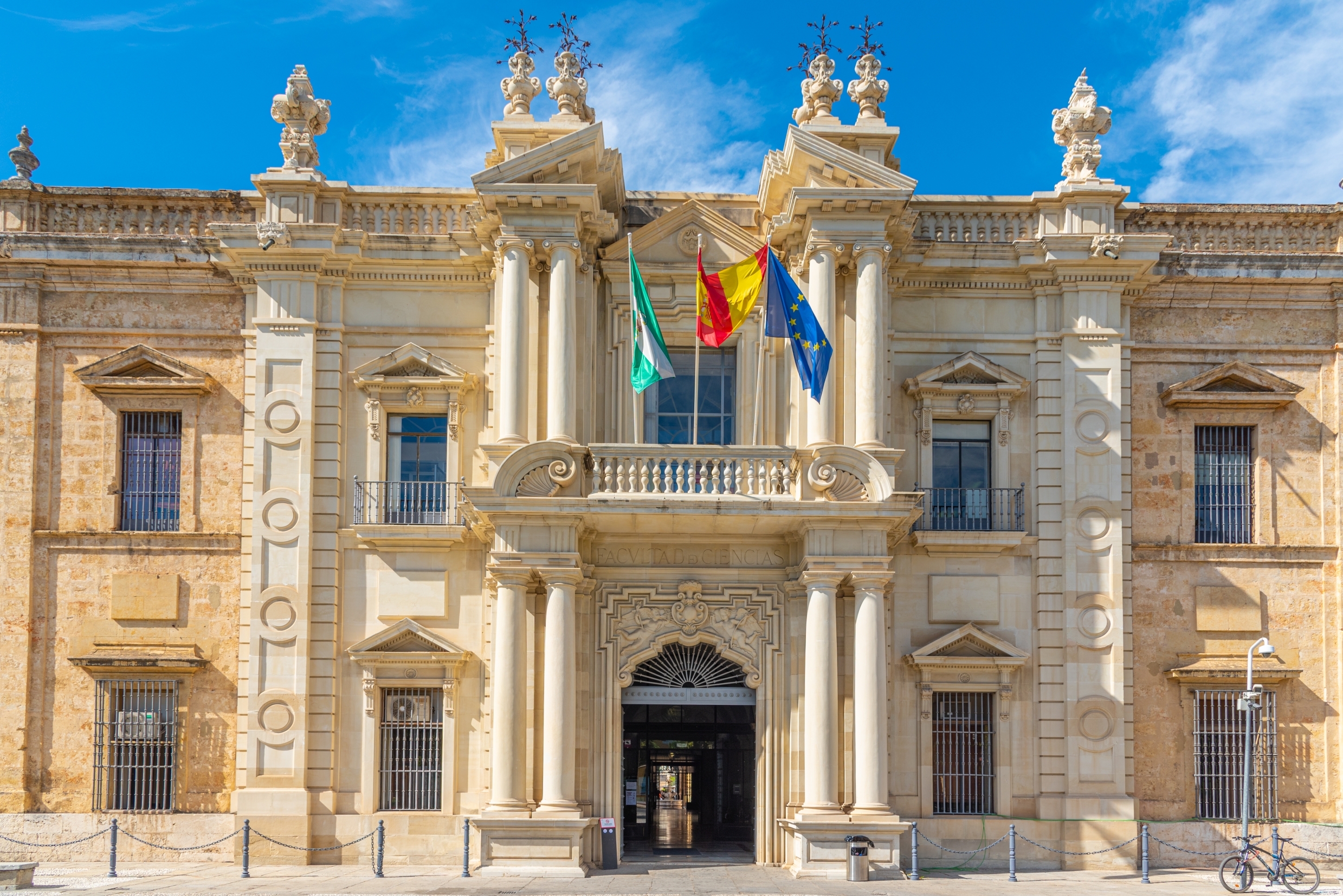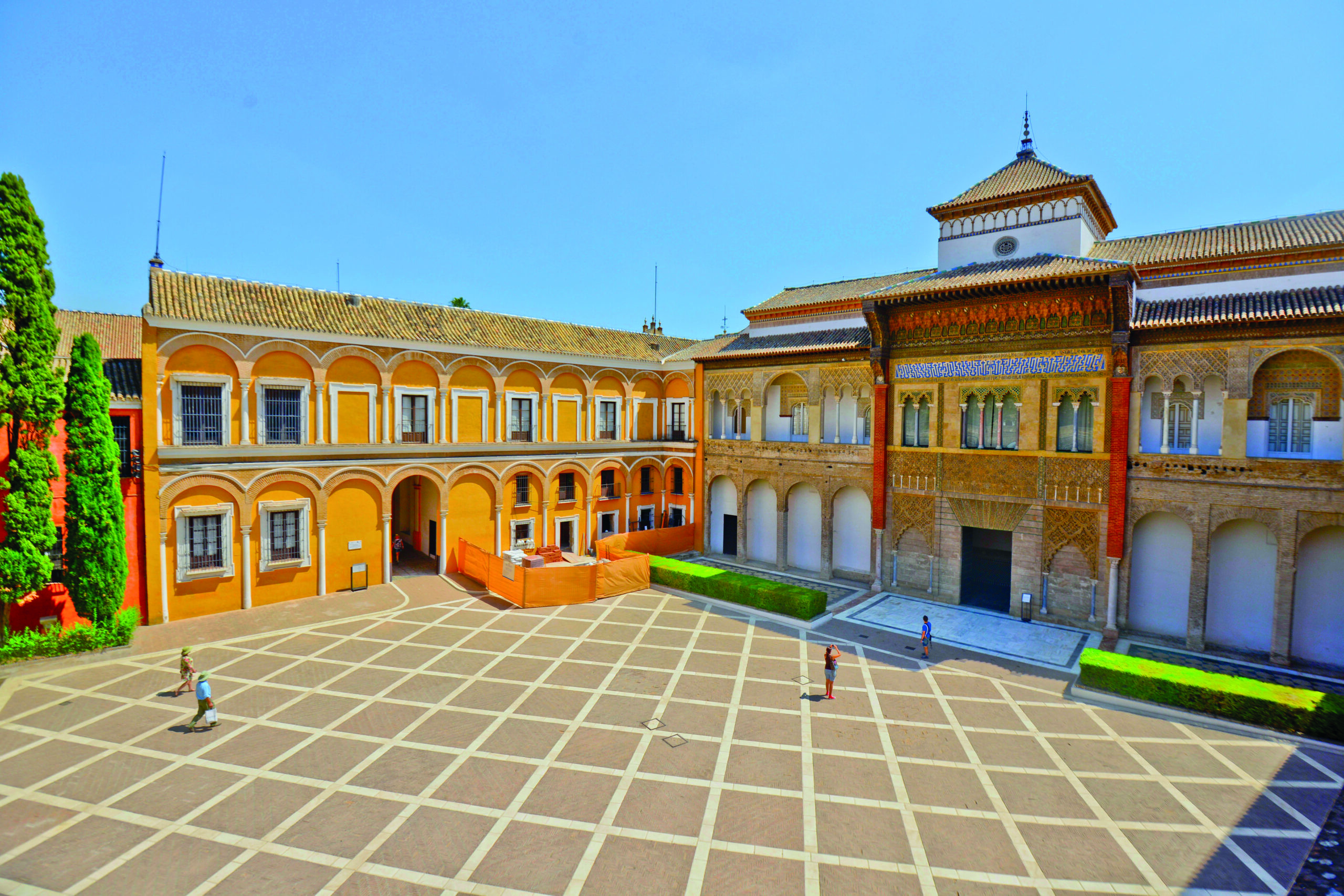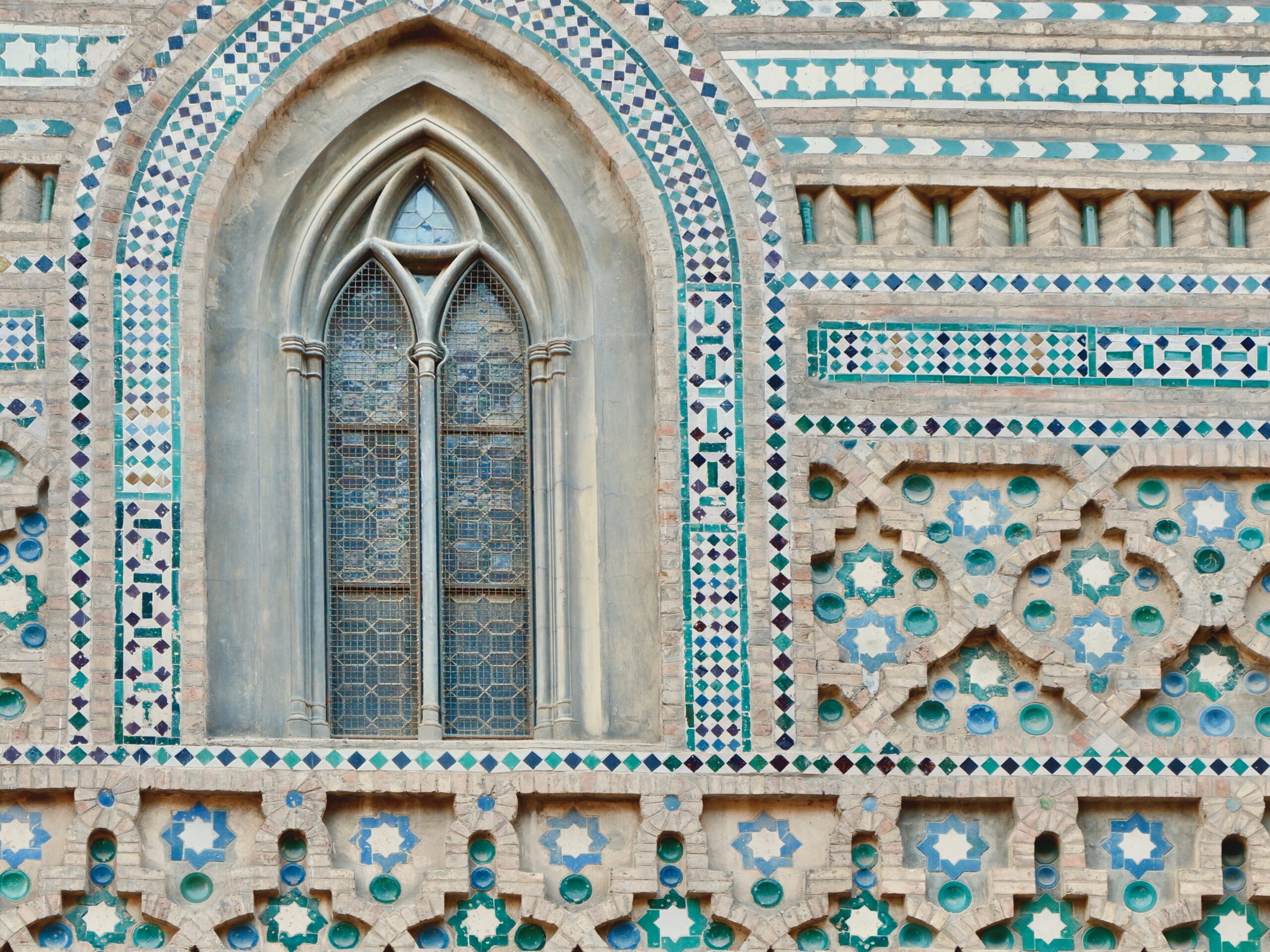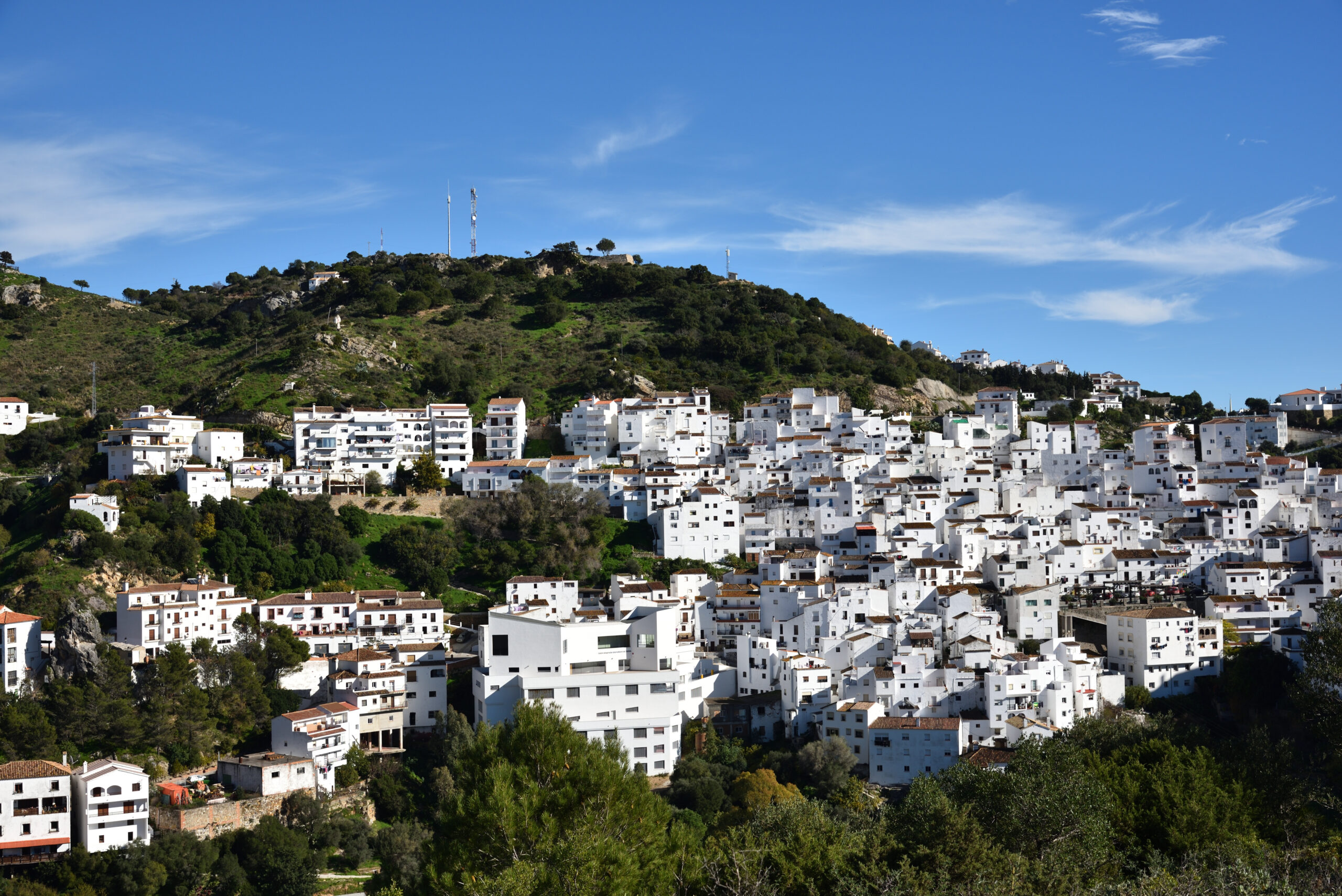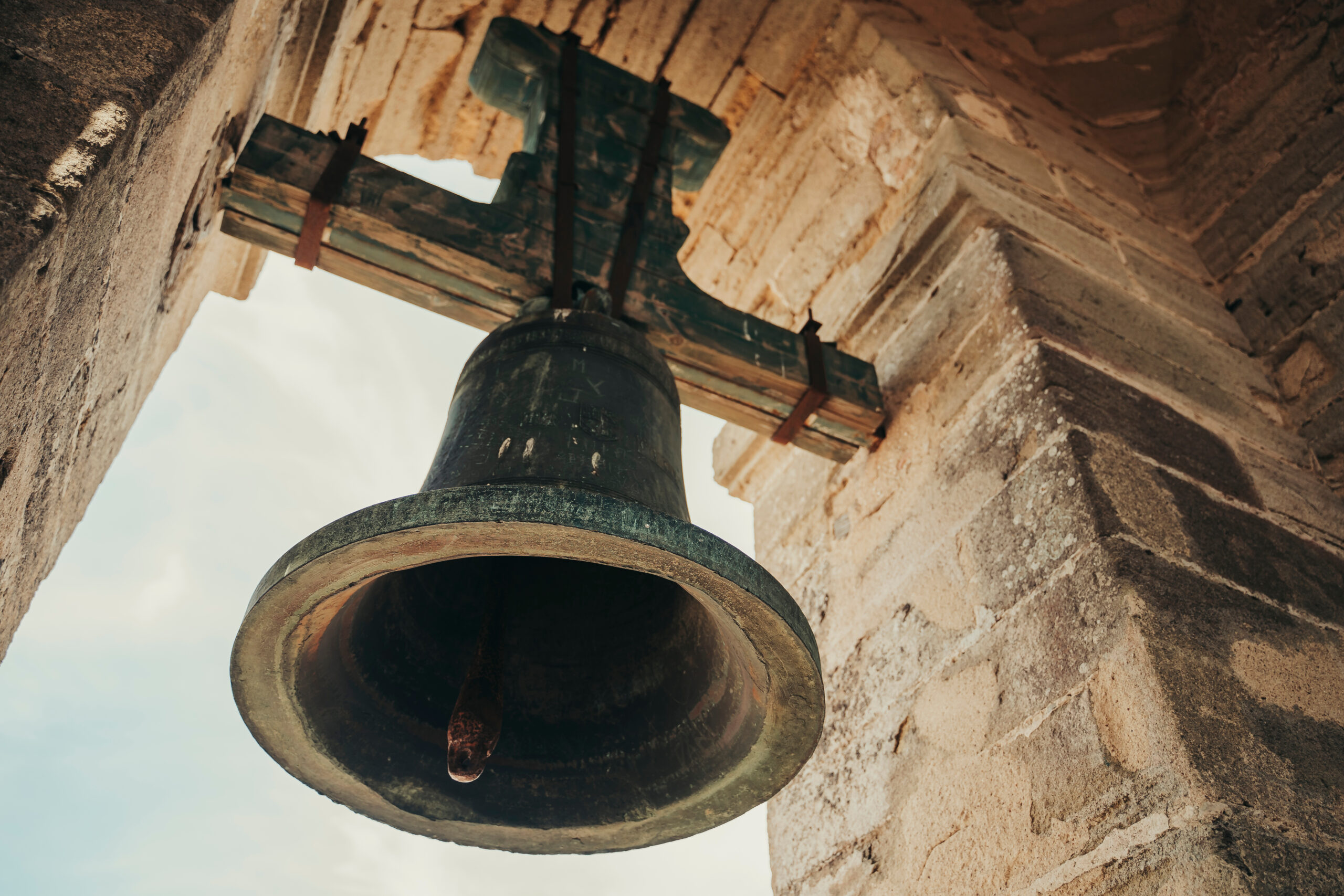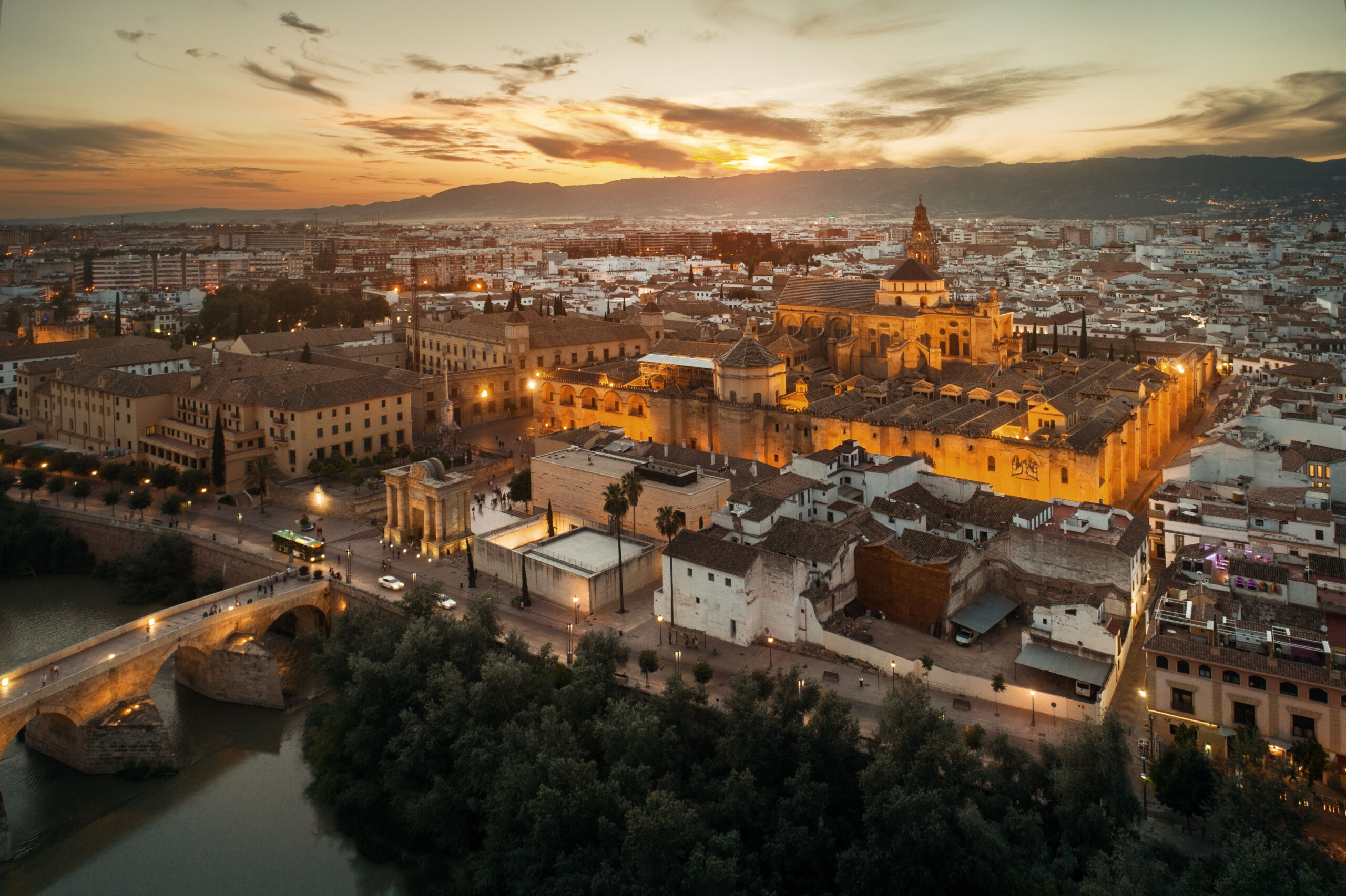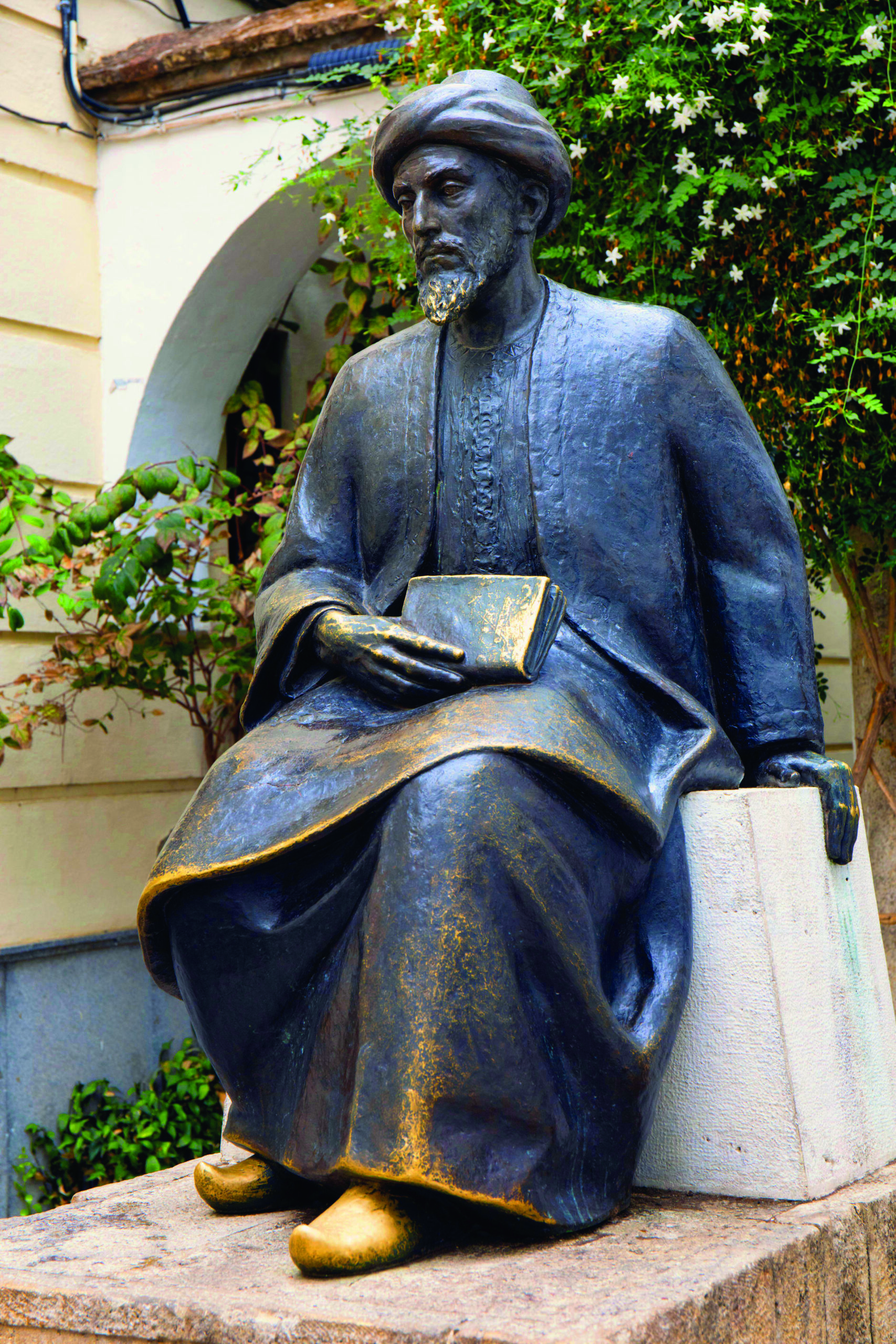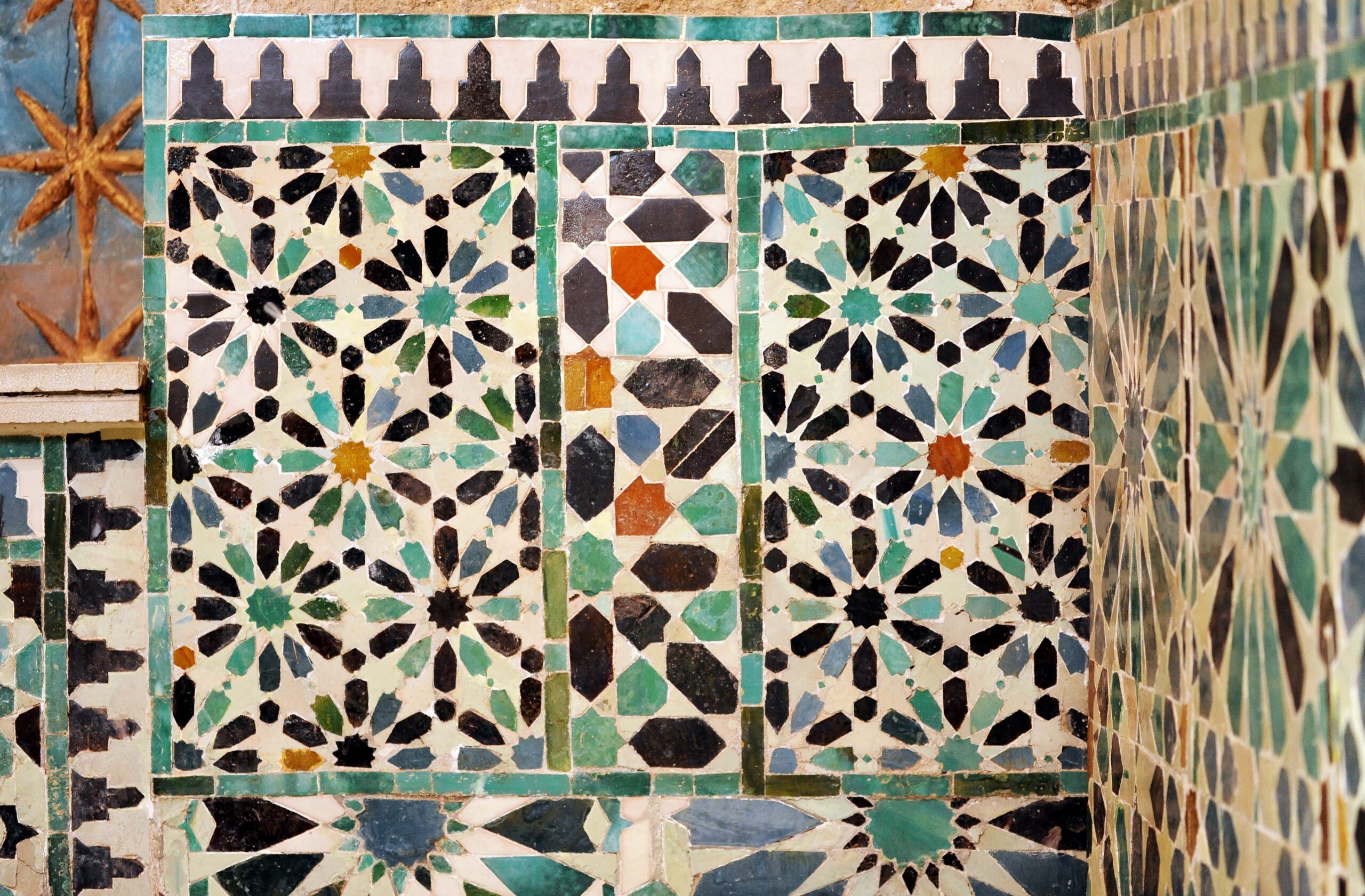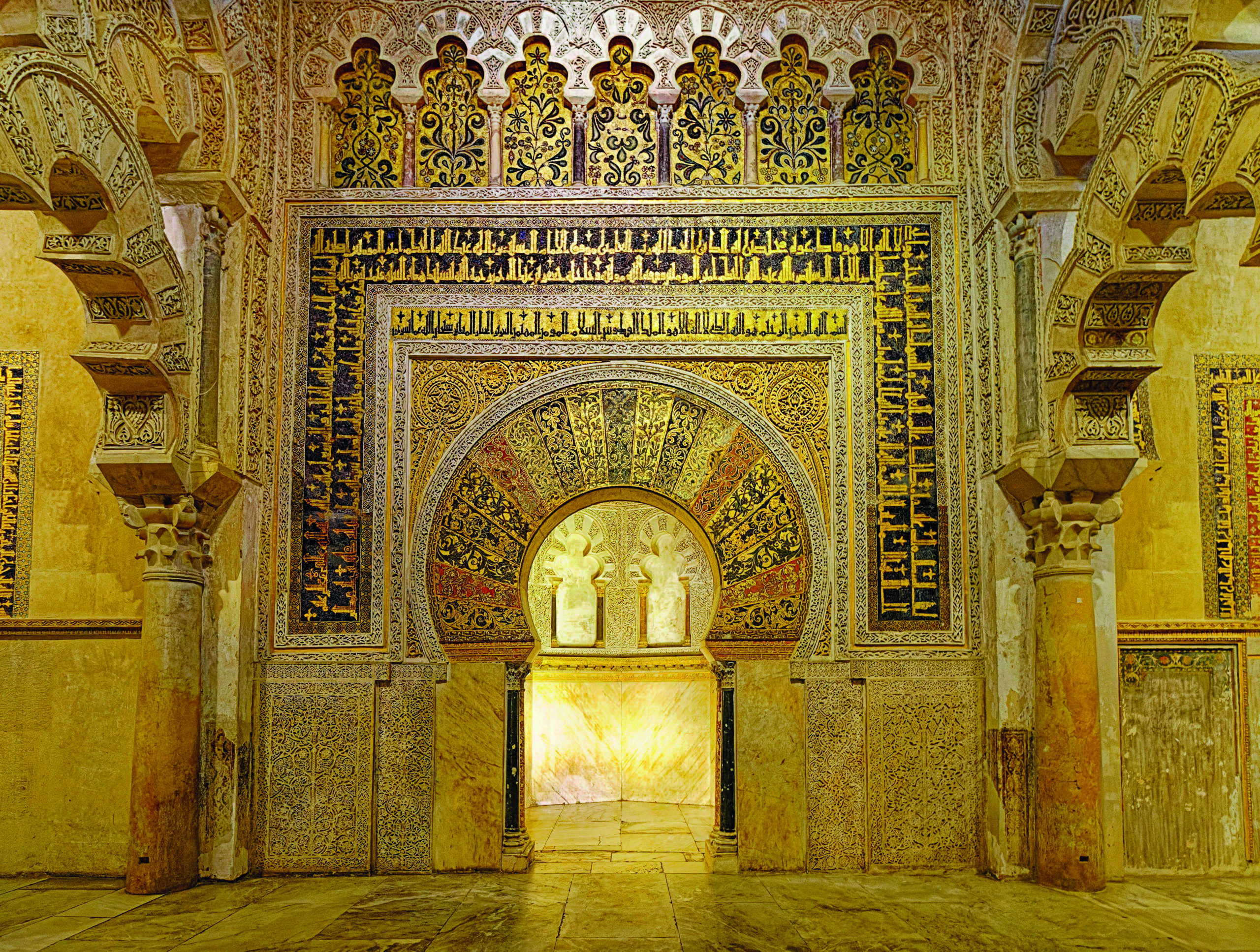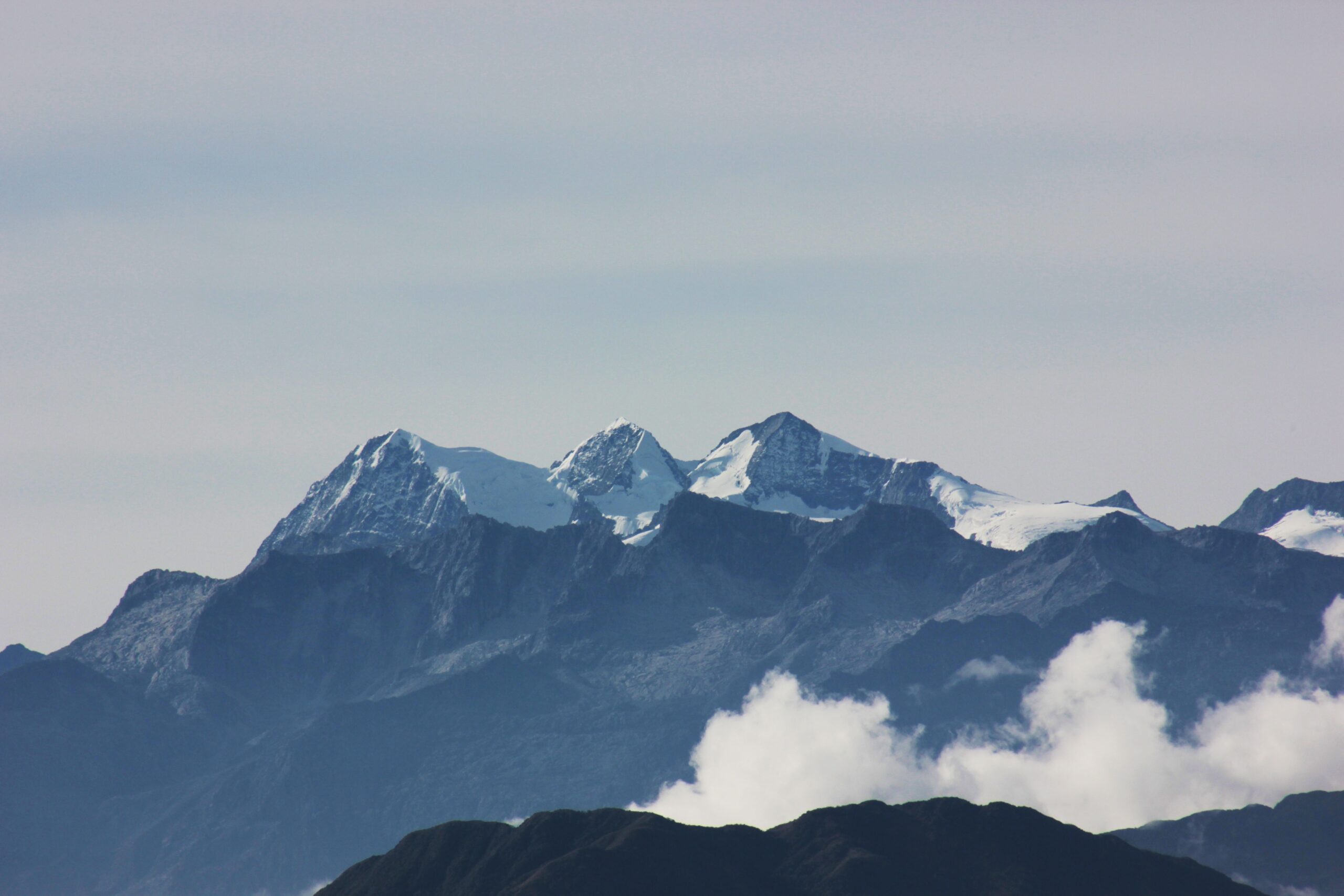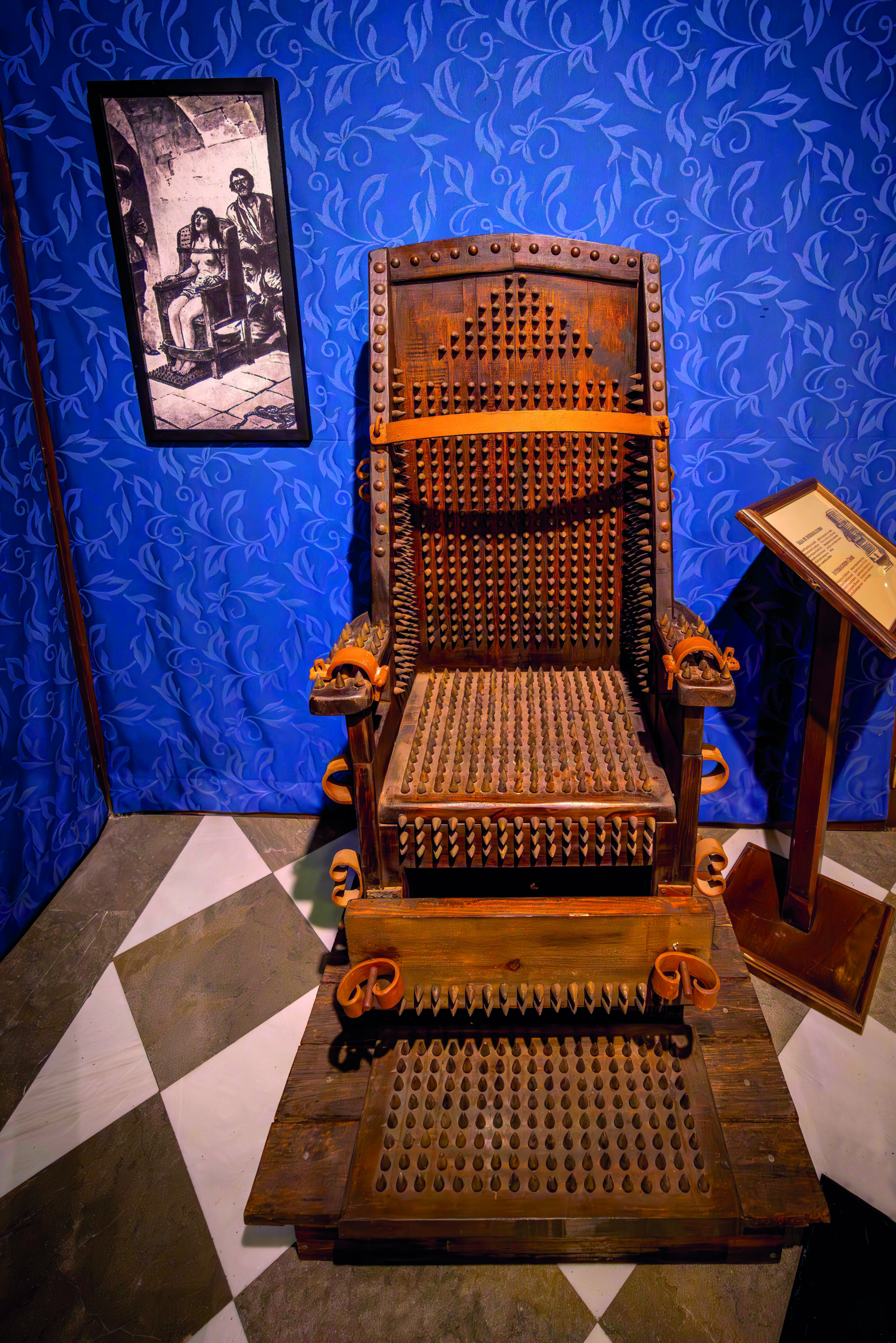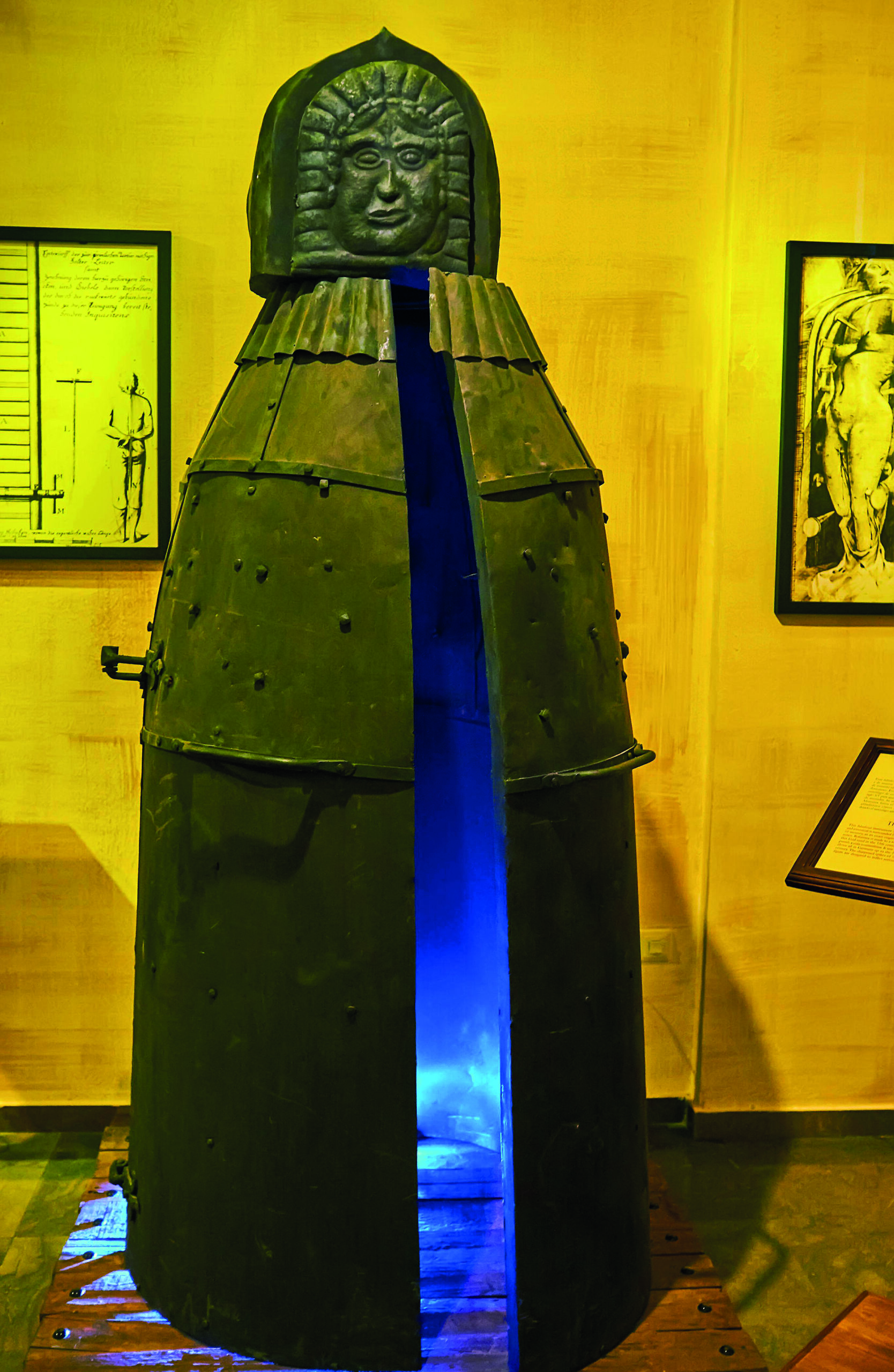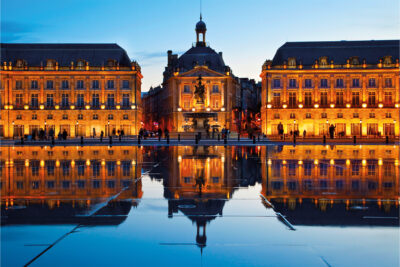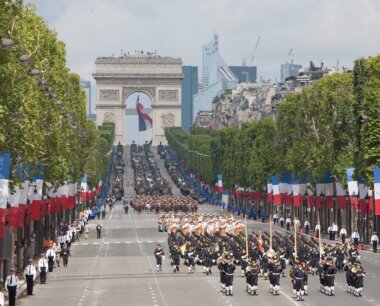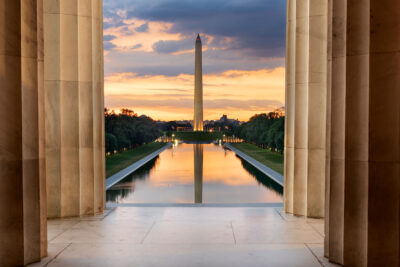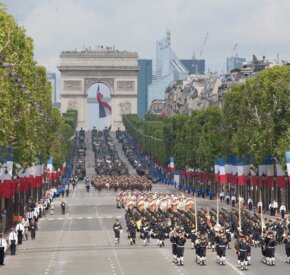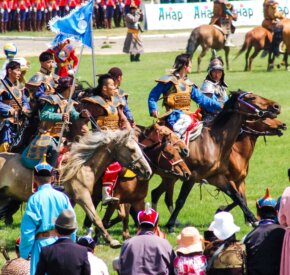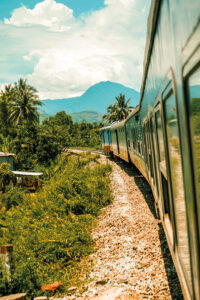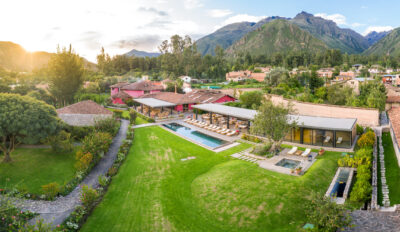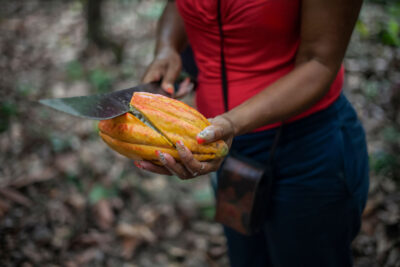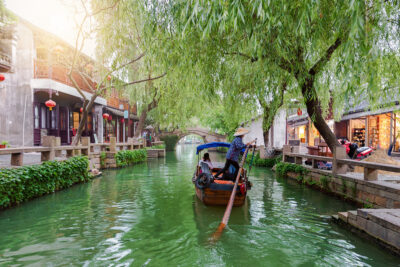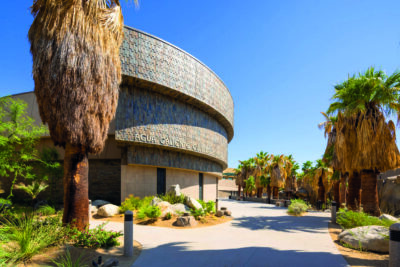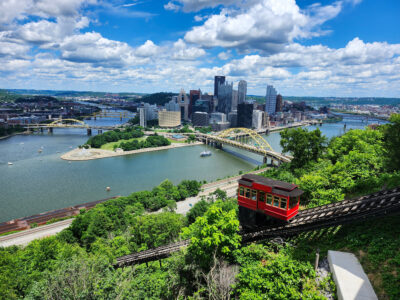Words by Martin Symington
“We are sitting in the centre of the greatest city of the medieval Islamic world after Constantinople,” pronounced a raven-haired lady at the table next to mine. My ears perked up. I was sat in a teteria – North African-style teahouse – in Córdoba, having stopped for a sticky date pastry. The lady (Yasmina), it transpired, was a guide at the neighbouring Mezquita de Córdoba, the giant mosque that was once the crown jewel of Al-Andalus, a part of the Iberian Peninsula that was once ruled by a succession of Caliphates, who held sway here for nearly eight centuries (711–1492 AD).
I already had an inkling of what my new friend meant. While threading the medina-like maze of plazas and alleyways in Córdoba’s Old Town, my nostrils had registered the aromas of mint and incense. I’d seen bronze doors carved in Arabic script, and I’d spied a mihrab prayer niche in the wall of a Christian chapel that hinted at another life entirely.
The ‘Moors’, as the Arab and Amazigh (Berber) peoples who invaded the Iberian Peninsula are known, have left their imprint on everything in Andalucía, from architecture and music to food and language. Their Islamic culture gave the region its character, which has long struck me as remarkable given nowhere else feels so full-bloodedly Spanish. And yet it took a rail journey through the great cities of southern Spain – Seville, Córdoba and Granada – where the secrets of Al-Andalus are preserved, to make me see that these two things are often inherently connected.

The Mezquita de Córdoba was built on the site of a church after being purchased by Abd Al-Rahman I, founder and first emir of the Emirate of Córdoba, in the late eighth century – ironically, a Christian cathedral would later be built within its walls 600 years later
BUILDING ON THE PAST
Of all Andalucía’s cities, Seville is perhaps the most closely wedded in my mind to exaggerated images of ‘Spanishness’, thanks to its toreadors, colourful festivals and flamenco dancers. On my first evening there, a costumed pageant was happening on Plaza de España, in which dark-haired young women with flowers behind their ears sashayed in polka-dot dresses while straight-backed young men in tight jackets and wide-brimmed hats trotted by on horseback.
My hotel was in the tightly packed, car-free old town of Barrio Santa Cruz. A short stroll here revealed hidden patios behind wrought-iron gates, and tiled courtyards filled with potted lemon trees. The district is dominated by its triumphalist Catholic cathedral, built on the site of a 12th-century mosque whose minaret, the massive pink Giralda tower, still stands today. The difference is that this supreme monument to Islamic engineering is now crowned with a Christian cross and a belfry.
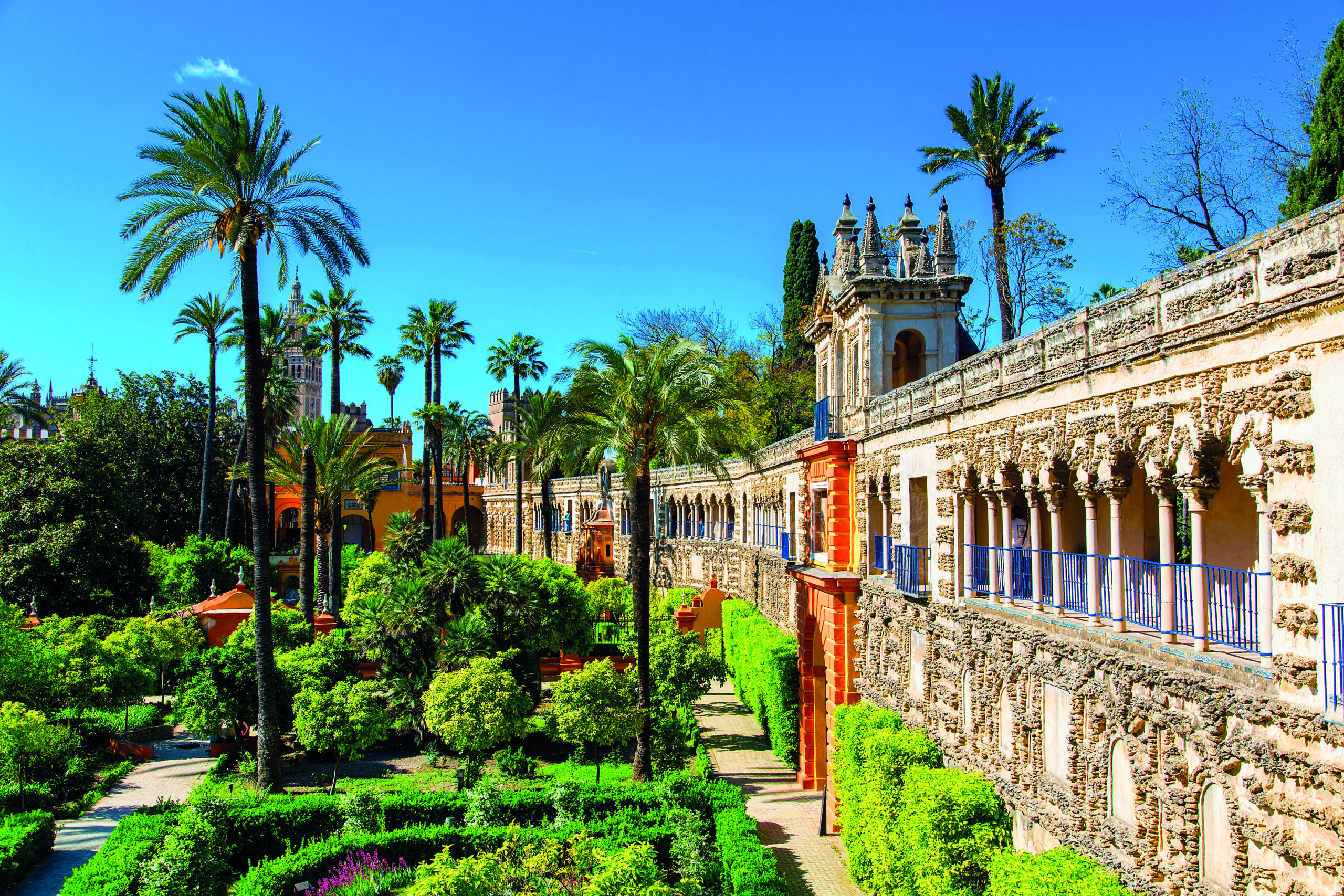
Seville is home to the largest Gothic cathedral in the world; the gardens of the Alcázar are home to 20,000 plants.
To reach the top, I followed a spiral of 34 long brick ramps, which the mosque’s muezzins once ascended on donkeys five times daily. From the pinnacle I gazed across the slow, pale-green river of Guadalquivir (a Spanish corruption of the Arabic wadi-al-kibir, or great valley). I could make out the glinting tiles of Triana district, where I would head later for tapas with a chilled Pedro Ximénez sherry soundtracked by the guitars and castanet-clacking of flamenco dancers, the impassioned Andalucían music rooted in Al-Andalus. As for the sight of the Plaza de Toros de la Maestranza bullring and the moated Royal Tobacco Factory – now part of Seville University – they were enough to start me humming the Toreador song.
Seville is split by the Guadalquivir River (pictured). Triana district is known for flamenco, while Torre del Oro stands on other side (Shutterstock)
Seville fell to the Christian reconquest of the Iberian Peninsula long before the demise of Al-Andalus in the late 15th century. The city finally surrendered to Ferdinand III in 1248, following a 16-month-long siege. It was then subsumed into the medieval Kingdom of Castile, becoming a prized asset.
Aerial panorama of old town Cordoba located in Andalusia region of south Spain (Shutterstock)
The screwball cathedral
The Roman bridge over the Guadalquivir river toward the Cordoba Mezquita Cathedral in Andalusia in southern Spain (Shutterstock)
But even this could not lessen the thrill I experienced when later glimpsing Granada’s hilltop Alhambra for the first time. This russet, pink and gold Arabian Nights fantasy of a fort and palace still reigns over the city, framed against a wild mountain backdrop. This is surely the sight that Mexican artist Francisco Icaza had in mind when he exclaimed: “Nothing in life is worse than being born blind in Granada.”
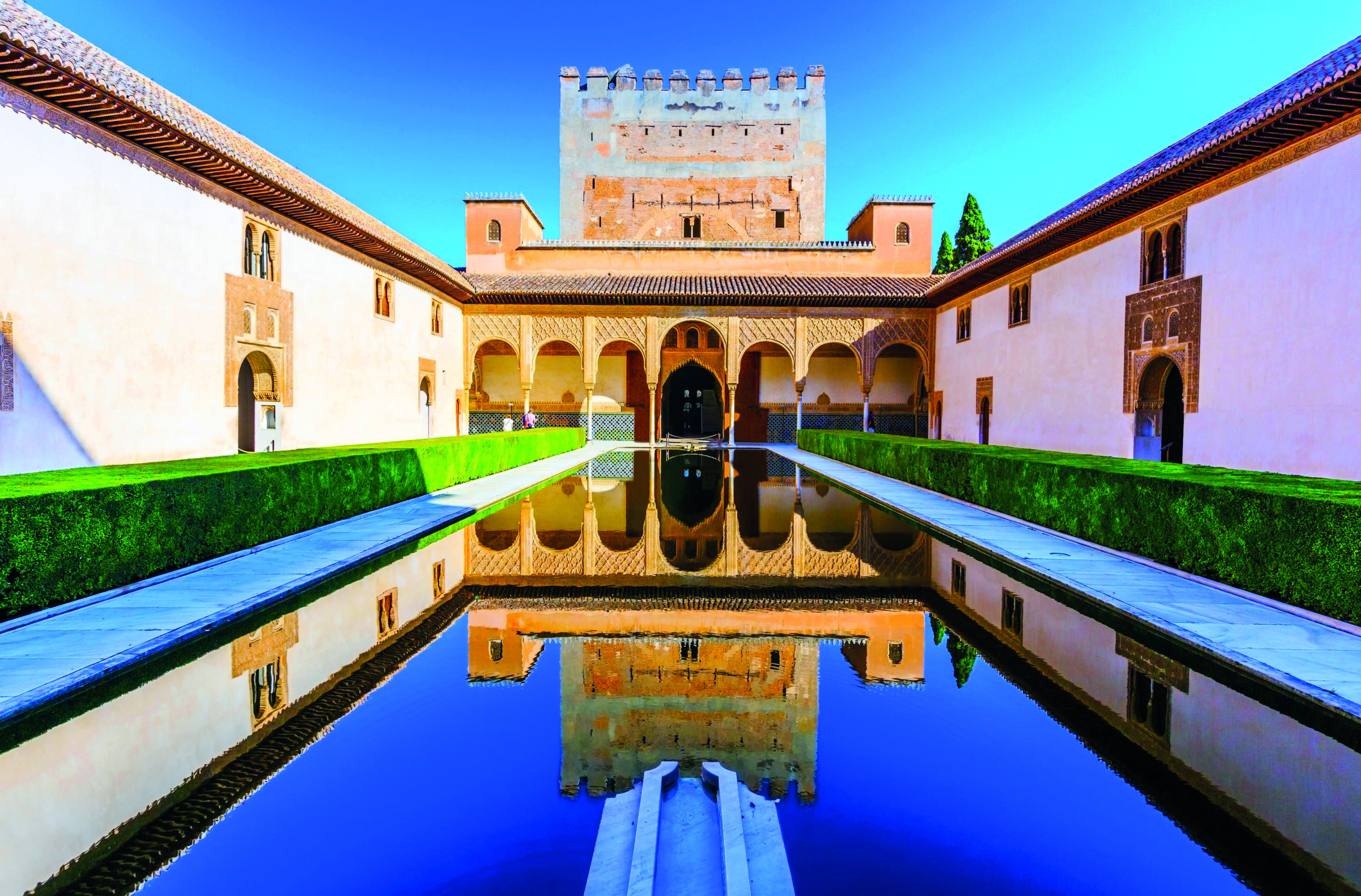
Benjamin Disraeli, another visitor bowled over by the Alhambra, reckoned it was “the most delicate and fantastic creation that sprang up on a summer night in a fairy tale”. But, as with any fairy tale, there is a twist. It was here that in 1492, Sultan Boabdil, ruler of the last Moorish dynasty on the Iberian Peninsula, surrendered to Ferdinand and Isabella, then fled for the Alpujarras mountains and on to North Africa. After that came the Inquisition.
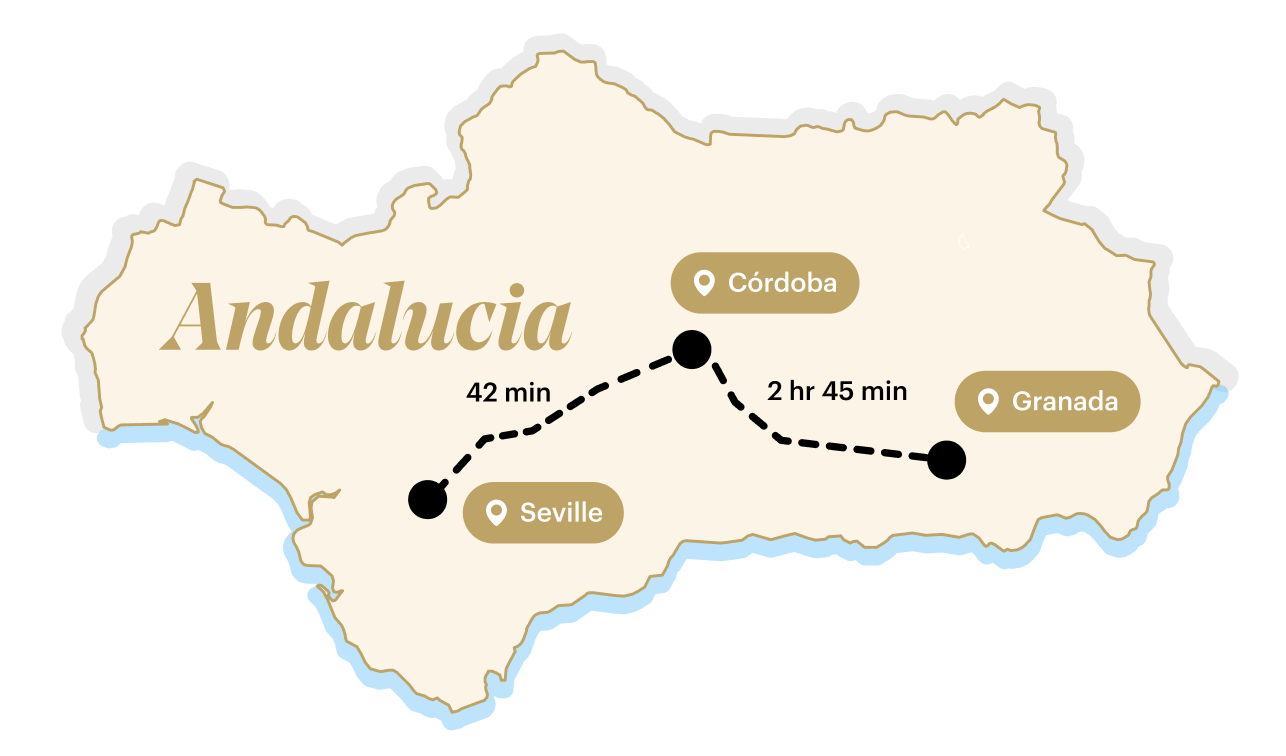
Granada’s other main survivor from its Al-Andalus heyday is the Albaicín ‘Moorish Quarter’. This faces the Alhambra from across the Darro River valley, tumbling down the hillside in a maze of alleyways. It is something akin to a Moroccan souk, complete with main thoroughfares lined with shops selling leather lampshades, hookah pipes and sacks of azafrán (both Spanish and Arabic for saffron).
I spent my final evening hopping between touristy teterias, colourful divans and murmuring Arabic music. As I sated my appetite with tapas – which also has its roots in Al-Andalus – I pondered my train journey across modern-day Andalucía. The high-speed rail line that had whisked me into this ancient bastion of the Islamic era had shown me another way of seeing this land. It had made me realise that what we tend to think of as full-blooded Spanish often has echoes of far older times. Or to paraphrase Federico Lorca, Granada’s most celebrated poet:

The Nasrid palace on Sabika Hill of Sierra Nevada, Alhambra fortress (Shutterstock)
Need to know
Summer can be very hot and busy, so avoid July and August. Spring and Autumn are preferable, while Winters are mild and often sunny. In Seville, it’s worth arriving for the Feria de Abril festival (two weeks after Easter), though book far in advance.
Carbon offset
A return flight from London to Seville produces 294kg of carbon per passenger. Wanderlust encourages you to offset your travel footprint through a reputable provider. To find one, visit wanderlustmagazine.com/inspiration/sustainable-travel.
Getting there
British Airways, easyJet and Ryanair fly from London Gatwick and regional airports to Seville and Málaga (90 minutes by bus from Granada). Flights take 2.5 hours. Rail travel from London to Seville requires changes in Paris and Barcelona; regional high-speed AVE trains run between Seville, Córdoba and Granada (renfe.com).
Where to stay
Patios, tunnels and cobbled alleys connect the rooms of Las Casas de la Judería. Llave de la Judería is a boutique hotel converted from two townhouses in Córdoba. And lastly, Casa Morisca, is a small hotel with a Moorish-style central courtyard on the edge of Granada’s Albaicín.
The trip
The author travelled with Inntravel (01653 617000; inntravel.co.uk) on its six-night, A Trail of Three Cities itinerary, includes two nights B&B in each of the three hotels mentioned above, regional rail travel on AVE trains, and maps and notes for walking tours. International travel is not included.
Words by Martin Symington
“We are sitting in the centre of the greatest city of the medieval Islamic world after Constantinople,” pronounced a raven-haired lady at the table next to mine. My ears perked up. I was sat in a teteria – North African-style teahouse – in Córdoba, having stopped for a sticky date pastry. The lady (Yasmina), it transpired, was a guide at the neighbouring Mezquita de Córdoba, the giant mosque that was once the crown jewel of Al-Andalus, a part of the Iberian Peninsula that was once ruled by a succession of Caliphates, who held sway here for nearly eight centuries (711–1492 AD).
I already had an inkling of what my new friend meant. While threading the medina-like maze of plazas and alleyways in Córdoba’s Old Town, my nostrils had registered the aromas of mint and incense. I’d seen bronze doors carved in Arabic script, and I’d spied a mihrab prayer niche in the wall of a Christian chapel that hinted at another life entirely.
The ‘Moors’, as the Arab and Amazigh (Berber) peoples who invaded the Iberian Peninsula are known, have left their imprint on everything in Andalucía, from architecture and music to food and language. Their Islamic culture gave the region its character, which has long struck me as remarkable given nowhere else feels so full-bloodedly Spanish. And yet it took a rail journey through the great cities of southern Spain – Seville, Córdoba and Granada – where the secrets of Al-Andalus are preserved, to make me see that these two things are often inherently connected.

The Mezquita de Córdoba was built on the site of a church after being purchased by Abd Al-Rahman I, founder and first emir of the Emirate of Córdoba, in the late eighth century – ironically, a Christian cathedral would later be built within its walls 600 years later
BUILDING ON THE PAST
Of all Andalucía’s cities, Seville is perhaps the most closely wedded in my mind to exaggerated images of ‘Spanishness’, thanks to its toreadors, colourful festivals and flamenco dancers. On my first evening there, a costumed pageant was happening on Plaza de España, in which dark-haired young women with flowers behind their ears sashayed in polka-dot dresses while straight-backed young men in tight jackets and wide-brimmed hats trotted by on horseback.
My hotel was in the tightly packed, car-free old town of Barrio Santa Cruz. A short stroll here revealed hidden patios behind wrought-iron gates, and tiled courtyards filled with potted lemon trees. The district is dominated by its triumphalist Catholic cathedral, built on the site of a 12th-century mosque whose minaret, the massive pink Giralda tower, still stands today. The difference is that this supreme monument to Islamic engineering is now crowned with a Christian cross and a belfry.

Seville is home to the largest Gothic cathedral in the world; the gardens of the Alcázar are home to 20,000 plants.
To reach the top, I followed a spiral of 34 long brick ramps, which the mosque’s muezzins once ascended on donkeys five times daily. From the pinnacle I gazed across the slow, pale-green river of Guadalquivir (a Spanish corruption of the Arabic wadi-al-kibir, or great valley). I could make out the glinting tiles of Triana district, where I would head later for tapas with a chilled Pedro Ximénez sherry soundtracked by the guitars and castanet-clacking of flamenco dancers, the impassioned Andalucían music rooted in Al-Andalus. As for the sight of the Plaza de Toros de la Maestranza bullring and the moated Royal Tobacco Factory – now part of Seville University – they were enough to start me humming the Toreador song.
Seville is split by the Guadalquivir River (pictured). Triana district is known for flamenco, while Torre del Oro stands on other side (Shutterstock)
Seville fell to the Christian reconquest of the Iberian Peninsula long before the demise of Al-Andalus in the late 15th century. The city finally surrendered to Ferdinand III in 1248, following a 16-month-long siege. It was then subsumed into the medieval Kingdom of Castile, becoming a prized asset.
Aerial panorama of old town Cordoba located in Andalusia region of south Spain (Shutterstock)
The screwball cathedral
The Roman bridge over the Guadalquivir river toward the Cordoba Mezquita Cathedral in Andalusia in southern Spain (Shutterstock)
But even this could not lessen the thrill I experienced when later glimpsing Granada’s hilltop Alhambra for the first time. This russet, pink and gold Arabian Nights fantasy of a fort and palace still reigns over the city, framed against a wild mountain backdrop. This is surely the sight that Mexican artist Francisco Icaza had in mind when he exclaimed: “Nothing in life is worse than being born blind in Granada.”

Benjamin Disraeli, another visitor bowled over by the Alhambra, reckoned it was “the most delicate and fantastic creation that sprang up on a summer night in a fairy tale”. But, as with any fairy tale, there is a twist. It was here that in 1492, Sultan Boabdil, ruler of the last Moorish dynasty on the Iberian Peninsula, surrendered to Ferdinand and Isabella, then fled for the Alpujarras mountains and on to North Africa. After that came the Inquisition.

Granada’s other main survivor from its Al-Andalus heyday is the Albaicín ‘Moorish Quarter’. This faces the Alhambra from across the Darro River valley, tumbling down the hillside in a maze of alleyways. It is something akin to a Moroccan souk, complete with main thoroughfares lined with shops selling leather lampshades, hookah pipes and sacks of azafrán (both Spanish and Arabic for saffron).
I spent my final evening hopping between touristy teterias, colourful divans and murmuring Arabic music. As I sated my appetite with tapas – which also has its roots in Al-Andalus – I pondered my train journey across modern-day Andalucía. The high-speed rail line that had whisked me into this ancient bastion of the Islamic era had shown me another way of seeing this land. It had made me realise that what we tend to think of as full-blooded Spanish often has echoes of far older times. Or to paraphrase Federico Lorca, Granada’s most celebrated poet:

The Nasrid palace on Sabika Hill of Sierra Nevada, Alhambra fortress (Shutterstock)
Need to know
Summer can be very hot and busy, so avoid July and August. Spring and Autumn are preferable, while Winters are mild and often sunny. In Seville, it’s worth arriving for the Feria de Abril festival (two weeks after Easter), though book far in advance.
Carbon offset
A return flight from London to Seville produces 294kg of carbon per passenger. Wanderlust encourages you to offset your travel footprint through a reputable provider. To find one, visit wanderlustmagazine.com/inspiration/sustainable-travel.
Getting there
British Airways, easyJet and Ryanair fly from London Gatwick and regional airports to Seville and Málaga (90 minutes by bus from Granada). Flights take 2.5 hours. Rail travel from London to Seville requires changes in Paris and Barcelona; regional high-speed AVE trains run between Seville, Córdoba and Granada (renfe.com).
Where to stay
Patios, tunnels and cobbled alleys connect the rooms of Las Casas de la Judería. Llave de la Judería is a boutique hotel converted from two townhouses in Córdoba. And lastly, Casa Morisca, is a small hotel with a Moorish-style central courtyard on the edge of Granada’s Albaicín.
The trip
The author travelled with Inntravel (01653 617000; inntravel.co.uk) on its six-night, A Trail of Three Cities itinerary, includes two nights B&B in each of the three hotels mentioned above, regional rail travel on AVE trains, and maps and notes for walking tours. International travel is not included.



